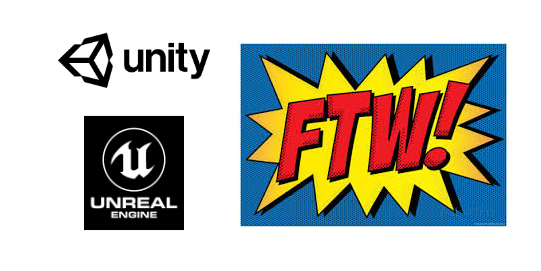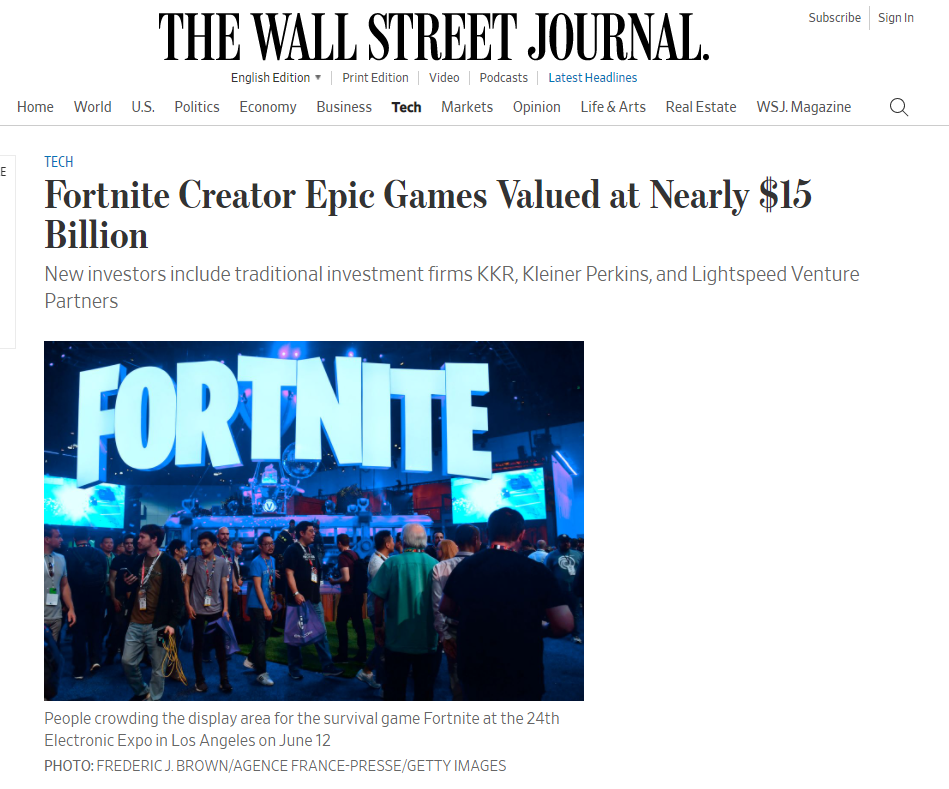
Why game engines will win factory simulation
In this article, we'll go through a number features which make game engines well suited to handle the complexity required to create realistic (useful) industrial simulations. But the main factor as to why their products will capture the market is funding. The factors include:
We'll see at the end whether these features add up to Disruptive Innovation.
Backgrounder
Here we're talking about simulating machines and robots for factory automation that can be connected to an actual controller (PLC, robot) that will run in production. And we are only talking about discrete manufacturing. If you'd like more background information on this topic, see:
Funding
Of all the platforms mentioned in Options for factory simulation game engines (Unity, Unreal Engine) are the most well capitalized. For instance, as of this writing:
- Unity (NYSE: U) $41B market capitalization
- Rockwell Automation (NYSE: ROK) $29B market capitalization
Neither of these companies are entirely focused on industrial simulation, but most of the investment Unity puts into its product will end up being valuable for simulation. Compare the small portion of Rockwell that is focused on simulation and it looks like Unity will have a significant advantage.
Unreal creates some of the most popular games in the world and has millions in revenue and was recently valued at $15B USD.
Any simulation package targeted only at industrial simulation is going to have trouble competing if their core functionality (say, robot programming) starts being migrated to the game engine platforms by 3rd parties.
Ecosystem
Both game engines have marketplaces, tutorials, YouTubers, conferences and more. If you are trying to build something, you'll more likely find help easily online than from an industrial software package support team.
Developers & Users
Because both packages are free to start, the number of students and hobbyists learning these packages is huge. Industrial packages are priced in the (tens of) thousands per seat which is a huge barrier to entry. Also, the aura of video games just makes learning these tools seem fun.
And as software eats the world, the game engine is the ideal environment to develop a simulation. It allows all the best coding practices, specifically:
By comparison, many of the sim packages utilize scripting languages and store the code base as binaries along with the graphics files, etc. It makes it very difficult to utilize any of the above. And as the simulation becomes the source of truth for the machine being built, proper tracking of code will become very important.
Scalability
Video games are huge and complex. The investment in game engines to make developing these games easier will allow factory system simulations to benefit. They will enable both small scale physics-based simulations (loose parts in a bin, bowl feeders) and large scale material flow simulations. The key being that they accommodate both: you can drop the bowl feeder into the material flow sim. Other platforms may have trouble achieving this breadth and depth.
Photorealism
Game engines are being used for movies, TV and product demos. While this technology (from NVidia and others) will be used by many, game engines will be able to invest more into integrating the technology because they have multiple revenue sources to support it.
But, besides looking nice, why would you need photorealism? Machine vision. Seeing parts, barcodes, etc. is already very important for quality inspections and will become more so for vision guided robotics and more.
AI, machine learning
Game engines are already being used to train self-driving cars. And Unity has machine learning built in. So, how could this be used in industrial automation? Well, probably many ways, but we'll point out the one way that would require a simulation: it is entirely possible that machines will not need programmers in the future; a goal will be set, a simulation created, and the neural network will create the program. Tesla's head of AI states this is being done already and calls it Software 2.0. While this is still a ways off, there are other applications for machine learning in conjunction with machine vision and robotics.
Disruptive Innovation
This phrase was coined by Clayton Christensen in his 1997 book The Innovator's Dilemma. Does it apply here? Consider the expensive "industrial" or "enterprise" products that the industrial incumbents (Kuka, Siemens, Rockwell) offer while reviewing these key points:
- Incumbent businesses innovate and develop their products or services in order to appeal to their most demanding and/or profitable customers, ignoring the needs of those downmarket.
- Entrants target this ignored market segment and gain traction by meeting their needs at a reduced cost compared to what is offered by the incumbent.
- Incumbents don’t respond to the new entrant, continuing to focus on their more profitable segments.
- Entrants eventually move upmarket by offering solutions that appeal to the incumbent’s “mainstream” customers. Once the new entrant has begun to attract the incumbent business’s mainstream customers en masse, disruption has occurred.
The game engines have already started moving into other spaces beyond video games. Industrial simulations are already being created by people who understand how to do this. It won't be long before there are polished products (either built with game engines or based within them). A few examples of companies building products within Unity:
Wrap up
So, we're taking some guesses about the future here and asking people to do some lateral thinking and choose the best technology even though it's not yet ready for their industry. The best tech doesn't always win but the extreme funding and performance of the game engines gives them a huge advantage.
Why are they better for your company today? We'll try to answer that in the next article:
Read more:
